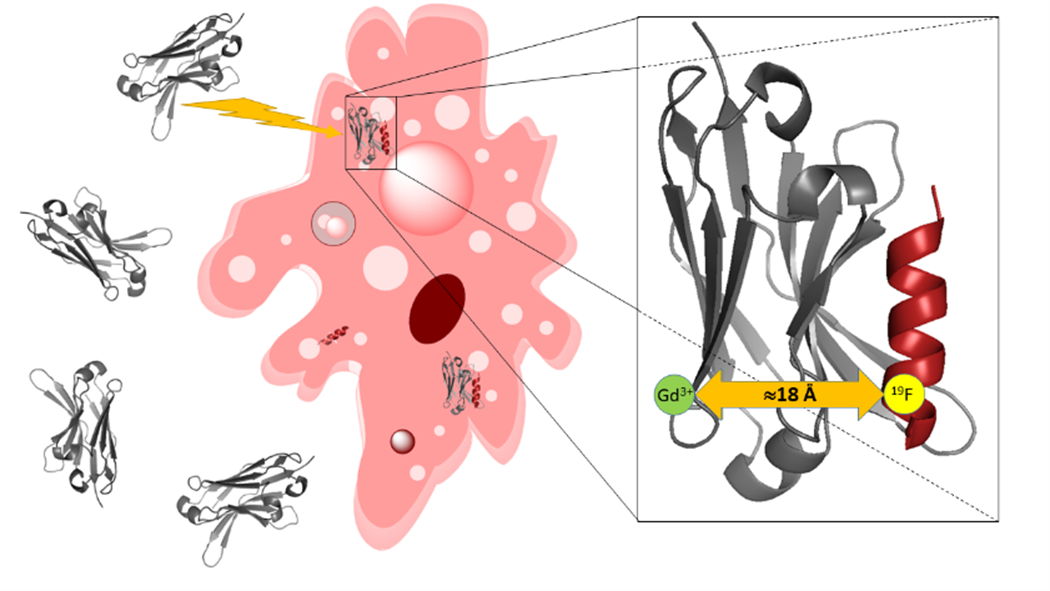Detecting protein complexation in cells using High-Field Electron Paramagnetic Resonance
This project aims to magnetically label proteins for new electron paramagnetic resonance (EPR) experiments to study a protein’s structure and dynamics at low concentrations and in-cell.
Groups
Research themes
Project status
Content navigation
About
Proteins are the key targets for pharmaceutical intervention. This project aims to magnetically label proteins for new electron paramagnetic resonance (EPR) experiments to study a protein’s structure and dynamics at low concentrations and in-cell. Of special interest are nanobodies, which are becoming increasingly important diagnostic and therapeutic molecules due to their strong binding and specificity, their small size (10 times smaller than an antibody) and ability of bacterial expression in high yield. Labelling of nanobodies and their binding partners with paramagnetic and/or fluorine labels offers an exciting approach to assay on- and off-target binding in vitro and in cells and assess pharmacokinetic properties. Critically, the new EPR methods described above can provide quantitative information on cell penetration and protein complexation, which is difficult to achieve by other methods.

